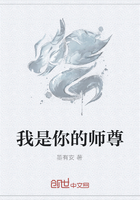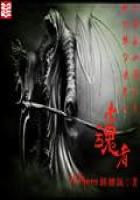胡恒
在现代主义对于历史问题的种种态度(否定、回避、曲折接纳)的后面,存在着一个共同的背景,即历史本身就是驱动现代运动的快感内核的一部分。在视历史为原罪的西方现代建筑的伦理观中,这一点被无情地掩盖起来。尽管如此,事情却总在不可预料的地方出现转机。在现代主义的海外嫁接(比如中国)的进程中,历史之快感内核的面貌有了揭显的机会。似乎那些正处于初级发展状态的地方(在中国,这样的地方比比皆是)里蕴藏着某种能力,它与现代主义的杂交,导致了其内在结构的随机重组。随之,作为其快感内核的历史也掀开了面纱。当然,这里,我们的目的不是借助陌生处所来破解现代主义与历史之间的神秘关联,而在于分析现代主义和中国现实的结合方式。当下的历史,在很多时候已经成为两者的交汇点。并且,在其中起作用的不是它的原始材料和特定意指,而是它作为快感内核的结构。曾经只能幽灵般闪现的缺席之物,在这里堂皇登场。
2007年11月完工的溧阳市“新四军江南指挥部纪念馆”(简称“N4A纪念馆”)“崇高客体”。
“N4A纪念馆”属于一个纪念馆系列,以新四军为名的纪念馆到目前为止已有将近10个,它们分别位于盐城、茅山、长兴、泰州、南昌……其内容不变—新四军的战争史。这是一种特殊的历史。它以其切近性和鲜活特征,将自身与中性的大历史分离开,成为一个独立的、有着绝对价值的领域。支撑着它的自然就是其“崇高客体”(新四军将士),所以它有一个广为人知的称呼“铁军”。
1963年在安徽泾县开放了第一个新四军陈列馆—新四军军部旧址陈列馆,2003年开放了江苏盱眙的黄花塘新四军军部纪念馆,2009年开放了湖北大悟的新四军第五师纪念馆,似乎这个系列还将继续下去。
整体来看,“N4A纪念馆”之前的那些新四军纪念馆,以及它的旧馆,都来自“革命传统教育与爱国主义教育”这一需要(“红色旅游”这一性质上的分水岭是从2000年开始的)。它们代表了20世纪70、80年代中国的符号性现实的特征。从设计上说,这种关于自我历史的回溯,其表达方式相当朴实—以最直接的呈现来重构关于过去的叙述。首先,保护历史事件的发生地,使之凝固下来。比如安徽泾县新四军军部旧址陈列馆就分布在约15公里范围内的13个自然村里。建筑只经过加固和维护。长兴新四军纪念馆的旧址建筑物是光绪时期的民宅。泰州黄桥新四军纪念馆的原址是20世纪初地质学家丁文江教授的丁家花园。溧阳N4A旧馆原址是明万历年间遗留下来的祠堂。其次,室内的展示以“原状复原陈列”(纪念发生地的场景和人物的活动)为主,“辅助陈列”(其他的补充)相对较少。穿着新四军军服的工作人员引导观众且行且讲。
N4A旧馆的位置是溧阳市前马乡西北水西村的一个宗族祠堂,也即溧阳新四军指挥部的旧址。该馆占地面积2460平方米,建筑面积3560平方米,分为纪念馆、将帅馆、六角亭、碑廊四个部分。纪念馆包含展厅和侧厅。大厅放置了陈毅、粟裕的全身铜像,背后是原新四军秘书长李一氓的题词“威震江南功在民族”,以及照片、实物、图表、电子模型等展品。侧厅分别保留着陈毅、粟裕的办公室兼卧室。粟裕部分骨灰敬撒于展厅的天井内。将帅馆陈列了陈毅等76位新四军将帅的生平事迹。一楼陈列了80余幅珍贵照片。二楼是4位上将、8位中将、62位少将的生平介绍,展品有将军们使用过的望远镜、手枪等物品。碑廊壁上镶嵌着新四军老战士的题词、书法作品。
这里,我们可以很清楚地看到旧馆的两个特点。其一是将革命的主体当作唯一的展示对象。从进馆伊始,这一点就凸现出来:两个全身塑像。相形之下,建筑本身没有任何表现的余地。它只提供了一个原始氛围,还原出历史事件的真切样貌,同时也强调了革命主体的超客观价值—革命穿越这些主体来到我们的面前。其二是将革命进程中的元语言编码为叙事材料。展品以陈毅、粟裕的旧物为主,比如完整保留的办公室和卧室。这是历史的实在物证,没有经过符号处理的元语言,它们和建筑空间融为一体。以此为中心,其他的二级语言(照片、文字介绍、各类其他将士的物品)按重要程度在空间上顺次排开。在离旧馆一定距离的碑廊则是边缘性的补充:书法、题词。另外,旧馆还设置了一种象征物,小尺度的石碑。它出现在两个最重要的地方—大门左右两侧(入口)、天井的埋骨之处(展览的高潮)。这种结构森严的叙事,一方面使历史事件具有浅易的可读性。重新编码过的人物、情节再现符合正常的理解模式。那些中小学生在铜像下瞻仰,顺着影壁阅读照片、文字、图表,再逐一感受军事地图、手枪、望远镜等战争纪念物,最后在水边的廊内观摩书法……另一方面,它提供了一个基本物—粟裕的骨灰撒于天井。毫无疑问,这是原质的直接暴露,它给予观者以不可抗拒的冲击力。我们的脚下是伟大历史人物的身体的一部分!过去的历史事件在这里升级为高度的、无须实证的华美存在(死亡)。崇高客体也找到恰当的形式:不可见,但就在我们眼前;它既是现实,又刺激着想象;更重要的是,它还是永恒精神的唯一身体对应物。它像一块埋于地底的基石,确定下旧馆的意识方向和基本结构。
这就是80年代初中国现实的表达。目标明确:爱国主义、革命传统教育。方法朴实:经典叙事和原质冲击。当时的现实需求相当单线,它无须太多其他层面叠加进来,也无须更多的意指可能性—革命的历史只代表自身。
28年后,张雷设计了N4A新馆。新展馆建筑面积达3650平方米(和旧馆相当)。大致来看,它是一个56米×28米的矩形体块,内分三层,高15米。外在的视觉层面上,新馆采用了与旧馆泾渭分明的空间塑造模式。首先,它是一个巨大的、综合性纪念广场规划的一部分,一个标准的人造物。第四,展示空间主题化。三层展厅分为五个主题:运筹帷幄、疆场烽火、风雨同舟、民族忠魂、华夏脊梁。它们借助声、光、电多媒体手段,模拟场景、光纤动态主体沙盘,力图形象地再现出历史场景。
在张雷的设计意向中,字母和院落是出发点。字母作为设计的前提条件,院落空间的反转研究这两项主题,设计者都已有过长时间的思考和试验。在他看来,字母和院落都是建筑的原子,是无法深入分解的基础物质,代表着某种开端。这是典型的现代主义思维:建筑的发展和现实表达并非由意识形态所左右;它根植于自身的元要素,无论是技术材料,还是空间类型,或者是抽象概念以及某个组成世界特殊结构的基本物(比如字母)。从完成结果来看,院落空间发挥了充分的效用:内向空洞增加了展览空间的层次,同时也微妙地改变了几何体建筑连贯的硬性轮廓。字母虽然没有成为建筑的唯一原型,只停留在正立面,但是它和两个靠前的院落之间的结合可以说相当的灵巧。
无论是综合性的纪念广场,还是整体化设计思路,或者是刻满隐喻和象征符号的形式系统,新馆都传达出这样一个暗示:建筑自身的阐述,成为了纪念历史的主线。在第一个纪念馆中,历史事件只是通过冻结历史瞬间来表明自身的真实性,它没有用衍生出的意义来进行道德训诫,而是以骨灰、手枪等创伤之物强行冲击观者的身与心。建筑没有独立的视觉构架,它是一具传统建筑的空壳(明万历年间的遗物),和革命战争只是偶然相逢。但是,在第二个纪念馆中,情况完全倒转过来。历史文物虽然有736件之多,但基本都是征集来的应景之物,和水西村这段历史直接相关的极其寥寥。革命主体不是主角,展示体系才是重点。它没有旧馆朴实的仪式感,而强调游戏化和互动化。也就是说,革命进程中的元语言,在此全部转化为次一级的再现形式—场景还原与电子书。建筑自身塑造的成功与否,成为了该项目以及建筑师的核心课题。正因为此,脱离开遗物的历史,开始在建筑身上寻找自己的形式—多重决定的符号性。就这样,建筑语言外在的视觉表现和历史的符号需求结合起来。我们在李布斯金设计的柏林犹太人纪念馆的新馆中也看到了这一点。
这一结合的最终结果就是,在青瓦屋顶、白墙、尺度怡人的旧馆前200多米处,矗立起一个时髦的、表现感十足(背景空旷、毫无遮拦)的现代建筑。
和80年代初相比,2007年的中国现实已经很不一样。虽然溧阳只是一个很小的城市(江苏安徽两省交界处的县级市)。但是,它现在面临的问题和大城市没有什么差别:发展的需要,以及相关的计划。“创建全国爱国主义教育基地,打造华东红色旅游特色品牌”,这是官方报纸《溧阳宣传》对新馆专题介绍的总标题。可见,新馆不再是单纯的展览,它还是旅游业的一部分。它和自然景观天目湖(“绿色名片”)一样,成为城市旅游业的窗口—“红色名片”。革命的历史,现在和经济发展紧密地搭接在一起。
实际上,这一变化早就悄悄开始。2000年,“红色旅游”这一说法首次出现在江西。2004年,国家旅游局确定2005年为“红色旅游发展年”。中共中央办公厅、国务院办公厅联合下发《2004-2010年全国红色旅游发展规划纲要》,正式启动全国范围内的“红色旅游”工程:建立10个“红色旅游基地”,20个“红色旅游名城”,100个“红色旅游经典景区”为主体的“红色旅游”的骨干体系。2在这一经济风潮之下,新四军纪念馆纷纷开始重建—2003年江苏盱眙黄花塘新四军军部纪念馆落成,2005年泰州新四军纪念馆扩建完成,2006年安徽泾县新四军军部纪念馆扩建,2007年盐城新四军纪念馆扩建,2008年则是溧阳新四军纪念馆新馆完成。
如果说纪念馆是一种历史陈述,那么2000年后的革命史就是关于自身的一个系列重写(这里应该从1998年的茅山纪念馆的旧馆翻新工程算起)。正如前文归纳的,第一阶段的历史陈述的特点很鲜明:革命等同于革命史,过去等同于现在,旧址等同于纪念馆。整个空间和遗物凝结成一块纪念碑,不可穿透,无须诠释,不提供解读的可能。它的显在价值是膜拜。这种膜拜不是个人行为,它是有着固定时间表的团体活动—比如盐城的小学生们每年必须在一个特定时间里集体参观当地的新四军纪念馆。第二阶段的历史陈述有了新的发展。如果说第一阶段的要点在于确定内容,那么现在的目标则在于获得形式,也即某种独立的叙事形式。这是历史在进入书写环节时的正常需求—用文本的隐喻来支撑历史表述。这使历史由静止的过去转变成为一个审美文本。它可以被反复书写和修改。当然,最重要的是,这决定了过去在现实中的嵌入位置。所以,现在,革命史和革命分离,过去和现在分离,新馆离开旧址另行建筑。
文本的历史隐喻在此表现为一种新的物质叙事系统的创建。在建筑的外观上,寓意成为形式塑造的目标。黄花塘纪念馆的“枪刺”图形、当地民居的屋顶意象。南昌的纪念馆计划扩建成“铁军广场”,而且“大门要放到大街上去”。溧阳的新馆也是一样,纪念碑式的朝圣之地成为大型休闲娱乐广场,其边界拓展到城市空间的范畴。
在三种尺度(城市、建筑、室内)上,历史的二次陈述都在调整着革命史的表现形式。“红色旅游”是一个重要契机,也代表着大他者(现实符号秩序)的新要求。4革命史的自我重写在满足这一进程的要求的同时,也在逐步将这段绝对的原质历史导入普通历史的轨道。在盐城的新馆扩建方案简述中,新四军纪念馆被第一次比拟为“未来古迹”。
在N4A新馆中,曾被朝拜的崇高客体(革命主体)现在也不可避免地“普通化”了—它被赤裸裸地定位成消费对象,是一种有待开发的“红色资源”。在旧馆中起奠基作用的创伤内核,已无启用余地,因为它与市场、旅游什么的格格不入,难以想象它能创造什么经济价值。其物质载体(骨灰原质)也已经封存在旧馆,封存于记忆。反观新馆,它除了油画、模型、电子书等再现媒介之外可说近似于空空如也。而被称为“镇馆之宝”的钟期光将军的上将服和张铚秀将军捐赠的毛毯,都是身份的象征性多于实在的纪念性,即使与旧馆的普通藏品相比也显黯淡。失去了创伤内核,失去了原质基础,失去了实证材料,现在的历史还剩下什么呢?
还剩下它的符号能力,以及推动这一能力的快感内核!究其本质,历史的快感内核是其创伤内核的时移境迁的对等物。两者的差别在于,创伤是原质冲击(鲜血和死亡)的结果;而快感则总在降格高尚之物(情感、道德),并且用符号游戏构筑新的现实世界。在旧馆中,原质冲击如此直接、强烈,意义和符号体系对此无能为力。在新馆中,原质的缺席,给了历史的快感内核以表现的机会,它如同一只无形之手,将现代主义形式系统、当下的意识形态、简陋的技术条件、革命战争史、风格化的民居传统,全部转化为符号游戏的参与者,转化为平等的符号构件。正如我们在前文所说的,开始,它(历史)是一个必要的借口,一个重复强化现实符号秩序的虚拟动机。随着现实的运转,它变性为一个活跃的结构—尽管只有抽象的框架—推动现实的符号进程走向物质性终点。
意义、符号、现代主义形式系统成为新的三元组,置换了原址建筑、遗物、骨灰这一旧三元组。现代主义卷入这一游戏,主要媒介自然是设计者张雷的现代主义建筑思维。一个更为重要的原因是,在现实的历史要素的诱导下,被现代主义视为原罪的历史的快感内核袒露出来—它和那只“无形之手”不期而遇,叠合在一起。正是在它的作用下,设计者严肃思考的现代主义的至善、透明、整体的伦理观被破坏。其形式系统被打散、分装进不同的意义包裹:字母原型“N4A”刻出了建筑的正脸(这个辨认起来有点费劲);折线的轮廓象征着“革命斗争的复杂性”;院落的空间类型变异叠加上“血洒山岩”、“功勋铭刻”等主旋律标志如此混乱的杂交,产生出一片意义的丛林。自从“现代旅游经济”介入革命史之后,展馆的意义就离开了预设的直线模式(青少年教育),它等待着重构和多样组合。可以说,新馆利用了这一次机会。这里凹进凸出的洞穴难道不就是意义组合石化的结果吗?似乎只有在这种表面的视觉放纵和意义泛滥中,只有在一片完全外在化的快感丛林中,它所容纳的崇高客体才有可能在失去原质寄托之后,还能自由地栖居于沙盘、微缩景观、油画等娱乐形式之上,停留在墙面的折线处、内院的红色空腔里的符号游戏之中,并且发散出某种新的崇高性—通俗的崇高性。在娱乐价值逐渐取代它的绝对价值之后,它褪去了神圣的外衣,成为我们日常生活的一部分。
这里表露无遗的符号快感并非事出偶然。看上去它是由设计者一手催生,其实快感的种子早已埋下。多数第一批纪念馆和N4A旧馆一样,骨灰—原质这一基础结构使崇高客体处于一个符号高度缺失的状态。虽然这一状态保持得很稳定,但是在一些特殊的情景(比如环境的异变和极端的个体经验)中仍会出现莫名的快感泄露。这些零星的快感残片是秘密的内在快感的扭曲再现,这和新馆的显形快感符号系统正好相反。它们是历史的创伤之核的共生物,是我们在难以全数消化原质冲击后的情感剩余。它们只存在于创伤的时代,或者说历史的第一次陈述之中。
镇江的茅山纪念馆有一个广为人知的传说。在山脚下燃放鞭炮时,纪念碑上就会响起清晰的“嘀嘀哒嘀嘀,嘀嘀哒嘀嘀……”的军号声。鞭炮停,军号停;炮声响,号声起。并且不同的鞭炮放出来的军号声的响度、节奏均有差异。从此,“纪念碑下放鞭炮,碑上空响军号声”的奇观不胫而走。虽然经过专家多次调查研究,都无法获得一个令人满意的科学解答。对此现象的公开解释是,“山下放鞭炮,山上响军号”这一世界奇观生动地再现了当年新四军与苏南人民浴血抗战的悲壮场面。
无疑,这里的军号声是一种幻听。它没有物质来源(军号和军号手),似乎是灵魂再现。这显然加重了历史的真实性。革命主体不是放置在展堂里的骨灰、塑像这些象征替代物,他们活生生地诞生在我们耳边。这一幻听共振出一个原本只存在于记忆中的场景。或许身在此地的人没有亲历过战争,但是自己的耳朵让它重现于眼前。那些只在电影里耳闻过的军号声瞬间点燃了我们的神经,沸腾了我们的热血,使我们仿佛置身于上甘岭、狼牙山,或者此地茅山的韦岗战斗之中。不可解释的幻觉居然创造出令人难以置信的真理的力量,这确实颇为费解。另一方面,幻听也将这一真理内容荒诞化。在私下里,这一现象被大家和茅山怪谜联系在一起。著名的“茅山道士”的传说也掺和进来。比之英魂再现,这一不容见于正史的民间口耳相传所给予的想象空间更为幽深莫测,且更具娱乐性。(透明公开的)科学真理和(讳莫如深的)鬼神之说如此怪异地糅合在一起,膜拜者在这一极端矛盾的状态下获得了巨大的快感。
这一私人体验化的幻听被历史的二次陈述迅速吸纳过来,转化为经济收益。军号怪谈成为该纪念馆开发“红色旅游”的招牌项目。年经营收入不断攀涨,现在已达300万元,而绝大多数同系列的纪念馆都在靠财政拨款苦苦支撑。今年4月份,由茅山新四军纪念馆投资,反映71年前新四军进入江南敌后在韦岗首战告捷的4D影片《韦岗伏击战》在浙江横店影视基地开机拍摄,且加强对这一关系的再生产—经济效益就是这么来的。最重要的则是,它还将所有的正常关系倒转过来:神话成为历史的证明,金钱则体现出道德教化的实证性。
还有一种特殊的快感存在—儿童的快感。它是新四军纪念馆的肇因之一,却常常被忽略。5月份的一则盐城新闻报道了盐城新四军纪念馆的户外展品正大量流失。纪念馆广场东侧有一批战斗机、山炮、坦克和舰船等大型历史遗物。这些年来,它们“遭受着让人意想不到的悲惨命运……一架歼七战斗机钢化玻璃机舱盖被人砸开,机舱内仪表电线等都不翼而飞;一辆水陆两栖坦克的肚子里空空如也污秽不堪,整个坦克被盗取得仅剩一具铁壳;那艘立下赫赫战功的鱼雷舰船如今驾驶舱内外所有能拆的都被盗拆了,连前后两挺高射机枪上的枪管也‘飞’走了。记者还看到瘫痪在垃圾堆上的两架高射炮,其外表也是锈迹斑斑缺胳膊少腿。”8那么,这些“锈迹斑斑”的废弃兵器的零配件是被哪些人偷走了呢?有谁会对这些没有什么经济价值和审美价值的破铜烂铁如此兴致盎然呢?我们很容易把目光集中在那些顽童身上。
不妨假设一下,每年一度在此进行的爱国主义教育(这是盐城小学生的传统活动)产生了很好的效果。小男孩们的情绪被强烈地激发起来—革命、战争、保卫祖国等字眼配合着枪炮武器,让他们无比憧憬那个壮烈的时代。小小的身体容纳不了高涨的欲望,于是他们开始了玩笑式的窃取活动……拆下几支枪管枪托私下把玩。9这一对战争遗物的私人占有,实际上是占有关于战争的想象。这是一种秘密的纪念形式,他们在禁忌的处境下分享着对革命与战争的热情。而且,正是禁忌的存在,使得快感强度直线上涨。这里我们很容易联想到电影《阳光灿烂的日子》里马小军在(军人身份的)父母不在家时的那些自娱自乐行为和那个富有隐喻性的军用望远镜。
这个纪念馆的新馆没有像茅山新馆一样对快感扩大化,且不遗余力地开发其经济潜力。相反,窃取快感被温和地制止。户外的展场种植上密密的小型灌木,小男孩们对那些飞机坦克大炮现在只能遥遥观之。但是新馆的室内增加了一些新奇的装置。一个展厅里被安设了一整面电子墙。墙做常见的战时的残破的砖墙模样,中间有些缺口。小孩的手一放进去,就会有轻微的电流经过,并且墙后背景火光四起,枪炮军号的轰鸣声不绝于耳。一般来说,小朋友会被惊吓得乱叫一番,满足而去。
军号幻听和窃取把玩都是对革命主体的非正常的接受。虽然一个上升为民间玄幻传说,一个则下降到不能宣之于口的违规秘藏。但是本质是同样的—神圣化的存在(革命主体)本来意味着快感的不可能性,但是对其曲折接受(鬼魂认同和触犯法纪)所引发的罪恶感,却导致对此不可能性的解封。并且,禁忌之后的快感尤其迷人。两者的传播方式也是一样:隐秘,快速,没有边界。在这些反向的变形行为中,不可触动的革命主体越发神圣,其崇高形象也越发完美。但是,随着历史的二次陈述的出现,当崇高性不再是历史的唯一特性时,原始的禁忌也随之瓦解—与此同时,快感大转移。民间传说转换为枪战大片;偷窃把玩则为电流过身所取代。茅山和盐城的两个新馆都对不慎外泻的原始快感做了规驯。它们都被注入新媒体之中,被控制、压抑、转换、导向外部。
尽管这是两个相当特殊的案例,但是我们已经看到历史两次陈述各自具有的不同性质的快感:一个是声音中的快感(这是一种被压抑的能指快感,不可感知的前意识形态快感,我们只能在鬼魂幻听和儿童咿呀自语中看到其略微表露的快感残余);另一个是意义中的快感(外向的、有新的形式载体的、群体的快感)。
相比之下,第一次陈述中的快感基本都是沉默寂然。第二次陈述则是花样百出。茅山新馆为历史的二次叙述找到4D电影这一时尚外衣。10但这只是个特例,因为这一对现成的原质/镜像(幻听/4D)难以为其他纪念馆所复制。盐城的纪念馆具有一定的代表性。相比茅山,它的快感转移的动作较小,仅在室内传统的展示形式与内容上做出改变。虽然新媒体的运用新意迭出,但这只是对原有的秘密快感的局部替代。11溧阳新馆的快感转移重点放在建筑上。它在其外化形式上做出了全面更新—休闲式的空间组团、谜语式的图像隐喻、娱乐式的游戏世界,将快感的诸般消费形式一股脑全搬了出来。我们可以怀着轻松随意的心态来接受和享受这一平民快感花园。
这一快感花园结构严谨。三条符号链(环境、建筑、室内)是其三个组成部分。它们分别由视觉符号与其对应的意义连接而成。这一系列对应关系(前文已经罗列了一部分)的恰当组合使建筑自身成为空间中的统一体,也是快感的统一体。在这三种表现形式中,建筑的快感统一体预示着一个更大的趋势。它和旧馆的关系也更为决裂。12不过,在另一方面,以上三种类型导向同一结果:快感的个人性被公开化,其至关重要的维度(想象力量)被消解。无可逆转的,建筑越来越有趣,历史越来越平实,快感越来越乏味。
当然,不是所有的纪念馆新建工程都做到了三条符号链的全新设置。在泰州、武汉,新建工程基本在旧址上进行。但是,总体来看,在茅山的扩建、黄花塘新建、盐城扩建、溧阳扩建、泾县扩建方案这些大多数作品中,三条符号链的缓慢形成还是清晰可见。而且,这也是现代主义与中国现实相接合的过程。纵观这一过程,我们会发现,从80年代中期的展馆设计开始,现代主义就起着两个主体(革命主体和参观主体)间的形式调停的作用,它使得两个主体间的关系成为稳定的现实符号秩序中的一部分。由于这一秩序(大他者)在不断变化,随之,相应的主体间的关系,以及现代主义在其中的角色也在发生变化。
1986年完成的盐城新四军纪念馆是(西式)现代主义建筑风格进入该系列的第一例。首先,该纪念馆的总体布局是一种自足性颇高的单向轴线空间层级布置。虽然设计者强调这是“传统方式”,它的目的是“从大门开始,使参观者逐步进入一种庄重、肃静的气氛中”。但是,从大门-群像-喷水池-纪念碑,最后抵达终点纪念馆,这一空间叙事模式却有着西方纪念性广场建筑的特征。13其次,主体建筑采用中轴对称、体块塑形等常规现代主义手法。并且,在外部的视觉界面上密布革命史的浅近寓意和专有标记。“入口两侧的实面做成两面旗状的花岗石的宽画面,象征当年新四军北上和八路军南下两股革命力量在盐城会师重建军部的历史事件,旗状实面采用红色花岗石上以线雕形象地再现当年新四军的光辉战斗历程,新四军臂章镶在立面中间部位,正门上方是李先念主席题写的镏金馆名匾……”
题词与浮雕等本属于“辅助陈列”的内容,现在却尽可能全部铺陈在建筑的外表皮上。这种革命叙事情节直接镌刻在外的手法,明显沿用了苏联的国家现代主义风格。实际上,由那些里维拉式的浮雕、罗马皇帝或苏联战争英雄式的骑马铜像、喷泉组合起来的户外纪念空间已经很清楚地表明这一意向。它们和莫斯科的那些革命公园何其相像。
尽管展馆混合了多种异质之物(主要是若干不同类型的叙事线条的交杂),但是现代主义风格仍然建构起参观者与革命主体之间的新一层关系。它是对之前旧址纪念馆的主体关系的强化。单纯的遗迹、遗物已经难以满足20世纪80年代现实符号秩序的需要。展览馆的教化功能的执行者必须增加新的建筑空间语言的助力。更何况一开始此展览馆就定位在3A级别上。特定的国家现代主义风格显然最为合适,而且这也合乎现实的建筑设计专业环境。众所周知,苏式纪念性建筑对那个时期的国内建筑师的个人经验有着重要的影响。
在1998年的茅山纪念馆的翻新和2003年的黄花塘纪念馆新建当中,现代主义没有继续苏式的国家社会主义道路,换上了本土建筑的躯壳。两者不约而同地在现代展览空间之上采用了民居的草棚意象。这一转变正好与历史二次陈述的时间相吻合。2001年发表在《中国博物馆》上的“试论革命纪念馆扩建工程中应重视的几个问题”一文,为革命纪念馆扩建的风格走向做了一个明确的归纳—“最好能够保护革命旧址周围整个区域或整片街区的历史原貌的真实性和完整性”。16此时,和革命教育一样,环境意识、(民族性的)历史意识都成为大他者的要求。所以,“人们在参观革命旧址时,还要领略与这些革命旧址息息相关的重大事件和杰出人物的发生地的山水人情、风土环境,以此来感受当年这些重大事件和杰出人物的历史氛围和传统文化背景”。17革命主体和观者的关系不再是严格的一对一的关系。观者的注意力必须被引向其他地方—那些可以脱离革命史而存在的自然物质环境、“民族民俗的绝好内容”。18民俗版的现代主义要平衡的就是这组分岔的联系。
这一要求延续至今,基本左右了1998年之后在有着自然环境背景下的N4A系列设计的风格,甚至包括刚刚完工的湖北大悟的展览馆。
在这两股主导潮流之外,还有一种原真的现代主义正在微妙地介入。这里的现代主义是经典意义的现代主义。19盐城新馆在功能安排和空间形态的选择上依据了该类型建筑当前国际化的设计模式。开敞明亮的展览空间,简约清爽的双层玻璃盒体水平错动叠加,竖向分割的节奏克制,颇有瑞士风格意味。20但是,几乎同时期进行的溧阳新馆没有拘泥于对此设计模式的还原,尽管设计者本人的瑞士情结十分浓厚。在此,现代主义不是一种单向的风格输出。它真正的作用在于其历史快感内核与革命史本身的快感内核合二为一,共同发挥“虚无之手”。这支虚无之手对传统的纪念性元素做出修改,将所有的寓意都潜藏了一层,以便与具体的现代主义手法实现不露痕迹的融合。所以,我们可以说,内部的红色空洞和正面表皮的折线是传统民居院落母题与N4A的图形变体。但是它们其实更靠近现代主义的纯净几何体块的异形下凹式减法处理—这和民族特色没有什么关系。
这是一种娱乐化(或者说快感化)的现代主义。泛滥的、强行植入的、随时可能出现理解错误的寓意与拆散的现代主义手法精密地结合起来,把红色纪念馆推到一个新的境遇。革命主体和参观主体的关系被彻底改造—成为一种散漫的智力解谜和自由消费的关系。如果说,以前以苏联版的国家现代主义为代表的盐城旧馆和以民俗版的自然现代主义为代表的黄花塘纪念馆,都是革命史通往普通历史的中间站,那么,溧阳的新馆可以说又向前迈进一大步。
这固然是一个成功,但是它也付出了相应的代价:张雷的另一个方案被毫无悬念地抛弃,和新馆外化的符号游戏南辕北辙。
在这个方案里,设计者将普遍的中国意象(民居)和一般意义上的现代主义空间语言成功地连接起来,这导致该方案具有了范本的力量—中国传统建筑和现代主义之间的抽象结合。但是,它忽略了当下的现实所铺垫下的初始氛围,比如革命史这一贯穿场地的决定性条件。或者说,它对革命史的运用只在传统建筑符号的延续上—此方案是否为新四军的展览馆似乎已经无关紧要。所以,它无法像新馆一样,为我们提供一种符号的系统建构来认识特定历史(革命史)的新内涵,只能无奈地停留在概念模型的真空状态。
但是,这不是方案被抛弃的原因—实际上类似思路的黄花塘、茅山,甚至粗糙不堪的大悟纪念馆都被具体落实。这里我们需要重新审视大他者的欲望(地区的)的具体状况。它和“红色旅游”这一主流的大他者欲望(国家的)并非完全吻合。2005年,溧阳市委市政府全局铺开“绿色 红色”的旅游计划,实施“两山一湖,南北联动”的大旅游开发。南部以天目湖和南山竹海自然景区为主,北部则以水西村和瓦屋山的红色纪念为主,“串珠成链”以形成一个联合旅游品牌。正如我们所见,目前,旅游业已成为溧阳的主导产业。或者说,这个身处茅山与太湖之间的被称为“绿色明珠”、“江南仙境”的城市已经被彻底旅游化了。整体而言,现在的开发重点基本上在北部的天目山与天目湖等自然景区(它们都是4A级的标准)和南部的瓦屋山(这里有李白的登临处和宝藏禅寺)。红色旅游在此只是结构上的需要(与“绿色名片”相对应),并非重点—新馆2800万的建设资金只是中等投入。这和其他红色旅游的项目有着细微的差异—革命纪念馆与风景区并非共生关系,结合得没有那么紧密。
按照溧阳旅游局局长汤全明的说法,这个纪念馆的作用在于“充实溧阳旅游的红色内涵,提升旅游文化的品位”。被选择可说是相当的偶然—但民俗版现代主义遭落选就是很必然的了。
在这个偶然实现的现代纪念碑中,我们看到了符号活动和建筑内容的连接,也看到两者合二为一的趋势。当然,纪念馆设计中对建筑的符号叙事能力的经营已经是国际主流。比如前文参考的柏林犹太人纪念馆,它和溧阳新馆颇多相似之处:有着创伤性内核,也是比邻而居的新建,同样致力于对新的纪念性的探索。最终,馆藏多少已不再重要,建筑本身的叙事能否达到最大化的戏剧性才是要点。这一叙事的基本材料是空间、光、声音——在柏林犹太人纪念馆中,倾斜的、不规则的内部空间,反复出现在墙面与屋顶的交叉光带,以铁面具铺满地面的声音冥想室(踩上去脚底发出的噪音如同噩梦),一起构成了一个感受密实、内里虚空的纪念体。它给予观者以全新体验,由内往外辐射能量、激活环境。曾被原质所压抑的快感(或创伤)由此曲折回归。历史已不再是一厢情愿的树立起纪念碑,以供观者缅怀、朝拜、纪念,或回忆,而是要让我们体验震惊、享受激情,并在其中获得自身与它(这一历史)的联系。
这是一种新的纪念性。历史的二次陈述也因此具备了某种独立性—它开始形成某种新的记忆。这也意味着历史的另一项重要功能开始启动:它参与进主体(观者)的心理构成活动之中,也即,历史真正进入到主体的内心。
“新纪念性”是一种形式游戏。但是它并非简单地撇开内容,虚构出创伤内核的符号替代物(比如红表皮等同红岩之类)。它的作用在于,借助新的建筑语言,穷尽视觉信息互换模式的所有可能性—室内空间、外部造型、城市街区、种种渲染图广告等—以使自身成为一块不能被忽略,无法轻易绕过的硬石。说起来,这也是历史一次陈述中的创伤内核的特点。只不过对于观者而言,前者从视觉惊诧开始,至感官疲惫结束,后者则以幽灵的形式飘荡于“崇高客体”的原质之上,存在于儿童的想象世界之中。无论是国家版现代主义还是民俗版现代主义显然都无力承担这一“新纪念性”。它们要么还在维持着意识形态教育的旧有机制,要么简单地将这一机制与风光游览叠合起来。这些单向的延续和杂交削弱且混乱了历史的创伤内核的原始能量—这一能量对于历史的重复陈述来说不可或缺。那些纪念馆也由此沦为大他者欲求的乏味回应者。从这个角度来看,茅山纪念馆的4D电影和溧阳新馆是两个特殊的案例,也较为相似。前者纯粹的视听轰炸让人晕眩:如此高科技(也是高投资)的立体电影只是讲述一次杀敌十余人的小伏击战,形式显然是第一位的;后者则是现代主义的碎片在芦苇荡中的强力插入。虽然两者为观者提供的接受方式角度有别,但它们都以感官快感为导向,且将革命史的原始能量传递下来,使之进入到观者的心理构造之中。
这很困难,但也非常必要。从前文我们已经可以看到,历史的自我重述有着诸多动机:大他者的种种欲望—经济上的、教育上的、宣传上的、国家的、地区的—在上述分析中已经逐一呈现出来。这里还隐藏着大他者某些秘而不宣的冲突,比如陈毅、粟裕两个下沿系统在八路军、新四军纪念路线上的权力平衡……它们在很大程度上操纵着N4A系列的运行。但是,和以下原因相比,它们都会显得微不足道。那就是“新纪念性”中包含的历史自主重述的内在动因—历史能够,且应该成为每一时代的主体构造的基本成分,它是人类自我推进的力量源泉。这显然已经超出大他者控制的范围。换句话说,历史一直都有着自主的本体之维,无论它在现实的符号秩序(大他者)的结构安排中处于什么位置,它都必然走向普遍的、广义的、中性的人类史。
“新纪念性”是一条可能的路径。它所包含的种种极限对比—建筑与环境、室内与室外、光线与声音—和革命史裹挟的巨大复杂性(创伤与激情、黑暗与光明)正相呼应。两相作用之下,无疑有利于唤醒观者心理中相类似的结构。所谓中性的人类史,正产生于这三方(“新纪念性”、革命史、观者)的相互作用之下。它要求我们严肃地面对历史中包含的一切深刻对抗的关系,而非盲目地顺应着大他者的要求,将历史简化为一种单向的纪念对象、利益工具和审美产品。
在这片芦苇荡中,拥有绝对价值、崇高内涵、一维方向的独立革命史正沿着“新纪念性”的道路走向人类史。它挖掘出世俗生活、寻常趣味、个体激情的崇高性,肯定了它们与革命史的平等地位,且用充斥着快感的形式游戏将二者激进地交织在一起。它迫使N4A系列重新思考自己的存在理由—对自我历史的回溯,已经不再可能仅是关于原始创伤的纪念,对于现实秩序的暂时巩固。它已经无法保持对于特定族群的精神世界的塑造魔力。它为自己设立了新的目标:参与进人类的整体循环(经济循环、日常生活的微循环等等)之中,成为中性历史的一部分。
现在看来,N4A系列的后续建设与此尚相距甚远。无论是刚刚完工的湖北大悟的纪念馆,还是2006年安徽泾县的纪念馆新馆方案,或者是预计12月完工的南昌纪念馆新馆,它们都选择在国家现代主义和民俗现代主义之间徘徊。尤其是南昌的新馆,简化通俗版的罗马诺的泰宫式正立面令人哑然所取代。
胡恒:南京大学建筑与城市规划学院副教授
注释:
1.“1985年1月9日,文化部颁发的《革命纪念馆试行条例》也明文规定:‘各类革命纪念馆的辅助陈列应尽可能利用革命遗址、纪念建筑中不需要进行原状陈列的房舍。一般不新建辅助陈列室,以免破坏革命旧址、纪念旧址的环境气氛’。”见倪兴祥:“试论革命纪念馆扩建工程中应重视的几个问题”,《中国博物馆》,2001年第3期,第50页。
2.转引自侯晋雄:“红色旅游下的革命纪念馆”,《井冈山医专学报》,2006年第3期,第91页。或见“2004-2010年全国红色旅游发展规划纲要”网络pdf版。
3.卢君:“盐城市新四军纪念馆扩建”,《山西建筑》,2008年第5期,第47页。
4.“以市场为导向、产业为纽带、网络为重点、效益为中心,打破行政区划和行业界限,整合资源,红红联手,创整体品牌。”侯晋雄:“红色旅游下的革命纪念馆”,《井冈山医专学报》,2006年第3期,第92页。
5.同上,第46页。实际上“未来古迹”一说来自1990年11月全国政协副主席洪学智参观旧馆时所说的,“随着时间的推移,年代越久,其历史和艺术价值也将越来越高,必然会成为未来古迹”。参见徐兆云主编:《铁军颂—新四军纪念馆》,中国大百科全书出版社,1998年,第151页。
6.摘自本方案的设计文本。
7.江苏教育电视台的江苏教育新闻“茅山新四军纪念馆:吹响苏南抗战的军号”。参见网页http://www.ec.js.edu.cn/newsfles/46/2008-07/11713.shtml
8.“江苏盐城新四军纪念馆展品被弃垃圾堆”。参见网页http://www.19lou.com/forum-922-thread-21826277-1-1.html
9.经纪念馆的工作人员证实,这些偷窃行为确由小朋友们所为。
10.现在在纪念馆里增建了动感影院,“该动感影院按20座设计,由特效座椅、60度环幕、高清投影机、6个独立声道音响系统、播放控制系统等组成,采用数字影片播放,根据韦岗战斗故事情节配备了喷气、喷水、刮风、震动、烟雾等特效。……根据剧情的需要,运用喷水、烟雾、座椅等特效设备,营造出机枪射击、炸弹爆炸、硝烟弥漫等真实战斗场景,使观众产生身临其境的感受和受到强烈震撼,全方位、多角度感受和体验红色文化。据悉,《韦岗伏击战》还是国内第一个以动感特效方式制作的近现代军事题材的影片。”参见网页http://www.xibaipo.com/news2007/News/zhouzaixing/2009/618/096181412511JCDCHI6H770B444C1JE.html.
11.所以最终的差异也是很明显的,盐城新馆的收益基本还是为零。
12.溧阳新馆完成之后出现了一个略显滑稽的情况,作为建筑物标志(或名称)的N4A三个大字应该放于何处似乎成了一个不大不小的问题。在其他的纪念馆中,这三个字都毋庸置疑地放在建筑正脸的中心。但在这里显然不可能,因为它没有一个同类建筑必须有的对称的正立面。所以三个字母的摆放被反复调整。首先放在入口上方,然后移到右上角,然后把下端的“New 4THAMRY”一行字去掉,再就是将白底蓝框蓝字的标准Logo换成普通的黑体字母,然后又嫌字体过大,将之缩小,再在建筑的背面左上角放了硕大的三个字母……几番折腾下来,这个建筑不像庄严的纪念馆,反而像个挂牌出售的商品。究其原因,我们可以发现,这个建筑完全不需要这三个字母。因为该标记已经彻底转化为建筑的身体,建筑自身已经是一个自足的个体。换句话说,建筑应该有的寓意已经内化为建筑身体的组成部分,快感的统一体上不需要重复的名称指示。
13.喷水池是西方广场空间设计的重点,也是中国古典景观设计中不可能出现的元素。在此方案的原始稿中,喷水池处于相当重要的位置,但是最后被取消了。
14.鲍家声、武向兵:“新四军纪念馆简介”,《东南大学学报》,1990年第5期,第82页。
15.盐城的新馆也已经完成,虽然风格相当现代,而且也将最前端的雕塑几乎放置在建军东路和旧馆中轴线的相交处,但是整体上仍旧保持了旧馆80年代的庄严感。
16.倪兴祥:“试论革命纪念馆扩建工程中应重视的几个问题”,《中国博物馆》,2001年第3期,第52页。
17.同上。
18.王春:“中小型革命纪念馆社会功能刍议”,《博物馆研究》,2007年第3期,第22页。
19.这指的是发端于20世纪初欧洲的新建筑运动。功能第一性、新材料、新结构、空间透明、形体几何化、去装饰等是它的基本特点。它与中国相遇、碰撞的历史,和这段新四军的纪念史正相平行,且相互映射。
20.这是一个相当不错的建筑,但它没有对其容纳的两个主体(革命主体和参观主体)的关系进行重新解释。它和旧馆之间的联系只存在于一面完全多余的外墙—它将现代的玻璃盒体遮蔽在身后,且在正面表皮上刻下与旧馆外皮同一比例的分隔线。虽然略显勉强,但是可以看出来纯净的现代风格已经相当程度地进入这一系列之中。
21.相比之下,盐城新馆的做法和这个被弃方案颇有共通之处,它们都是从设计本身出发,而忽视了大他者的欲望,所以设计的可贵尝试在此各遭不幸际遇—一个用一道墙半遮半掩之,一个在方案阶段就被直接忽视。
22.溧阳的茶文化产业发展迅速,各种茶文化节和相关的高层论坛层出不穷。
23.李金堂:“打造苏南红色旅游第一品牌”,《常州日报》,2007年11月1日。
24.这一点,国家版和民俗版现代主义都很难做到。现在在宁杭路上来往的车辆都会看到这个不经意间就会撞进视线之内的黑沉沉的异型块状建筑,它已经成为溧阳的一个招牌(或者说符号)。
History of Revolution,Enjoyment,Modernism
Hu Heng
Behind the various attitudes of modernism to the historical issues,there exists the same background,the structure of the history as some kernel of enjoyment that drives forward the modern movements. Although it is cruelly concealed in the ethics of the western modern architecture,where the history is deemed as the original sin,upturns always come up at somewhere unpredictable. During the process that modernism got transplanted overseas(for example,China),the kernel of enjoyment of the history found an opportunity to show up。It seems that those primarily-developed areas were containing some capability,which crossed with modernism and enabled the inner structure of modernism to reform arbitrarily. Subsequently,the history,as the kernel of enjoyment,lifted up its veil as well。Certainly,we are not adopting the strange locations to interpret the mysterious connection between modernism and the history。In stead,our purpose is to analyze the mode in which modernism combined with the reality in China,since,for many times,the existing history has been the combination of them both。Besides,it is not its original material and given meaning that function here,but its structure as the kernel of enjoyment。Used to be haunting here like a ghost,it now made a grand debut(strange locations).
The New 4th Army Jiangnan Headquarters Memorial(“the N4A Memorial”in short)was completed in November 2007 at Liyang City。It set a good example for the smooth dock of modernism and the reality of China with the history as the pivot. As a Memorial for the history of CPC,which is located at some Chinese tourist destination and in the global web age,it indicates something special. With these layers intersecting with each other,the results therebyarising are quite thought-provoking and give us an opportunity to survey the ever-changeable encounter forms between modernism and the reality of China. Apparently,our analysis should start from the history。It is no longer the vestige of the past as it usually is.Exactly speaking,it starts as a necessary excuse and a virtual motivation,which strengthens repetitively the symbolic order of the reality。However,as the reality revolves,it gradually turns to an active structure,which,despite abstract framework,pushes the process of symbolization in reality forward to a material destination.At here,we may find that a scaled memorial project(architecture of the CPC history)is launched at a small city(at the county level)and attempts to incorporate a“sublime object”into a decomposed modernism form system.
The“N4A Memorial”is part of a memorial series.So far,nearly 10 memorials named after the New 4th Army have been established,respectively located at Yancheng,Maoshan,Changxing,Taizhou,Nanchang,etc.Despite the different locations,their contents remain the same,the war history of the New 4th Army.It is a special kind of history.On the strength of close and vivid characteristics,it breaks successfully away from the neutral grand history but erects as an independent realm of absolute value。Certainly,it is the“sublime object”(the officers and soldiers of the New 4th Army)that supports it。That's why it is widely addressed“the Iron Army”.
The New 4th Army Memorials previous to the N4A Memorial and its precursor are built for the education of revolution traditions and patriotism。They represent the characteristic of the symbolic reality of that age(China in the early 1980s).In terms of design,this retrospect to the self-history is expressed in quite a plain manner—to reconstruct the narration about the past through the most direct demonstration.Firstly,it involves protecting the place where the historical events take place and solidifying it.To follow it,such media as the relics,photos and written words are adopted for the classical narration of ditheism.In addition,necessary theme memorials are added(sculptures,inions,etc.)It is quite a mature set of narration mode。The spatial imaging participates in it cooperatively instead of proposing independent ideas(especially conceptual ideas).The old N4A Memorial,which was restored and opened in 1979,set a good model.
The old Memorial is located at an ancestral temple of Shuixi Village in the northwest of Qianma Town,the old site of Liyang New 4th Army Headquarters.2460 square meters in land area,3560 square meters in constructed area,it is divided into 4 parts,namely the Memorial Hall,the Marshal Hall,the Hexagonal Pavilion and the Tablet Corridor。The Memorial Hall contains an exhibition room and a wing.In the exhibition room the bronze statues of Chen Yi and Su Yu are displayed.At the back of the statues,inions by Li Yimeng,the former Secretary-General of the New 4th Army,are displayed along with other exhibits,such as photos,real objects,diagrams and electronic models。In the wing,the offices and bedrooms of Chen and Su's are reserved respectively。In honor of the marshal,part of Su's ashes has been scattered in the patio of the exhibition room.The life stories of Chen Yi and other 76 New 4th Army Marshals and Generals are displayed in the Marshal Hall。On the 1st floor,over 80 precious photos are displayed,while the introductions to the lives of 4 Admirals,8 vice Admirals and 62 Rear Admirals can be found on the 2nd floor。The exhibits are telescopes,handguns and other articles once used by the generals.On the tablets along the Tablet Corridor the inions and calligraphy works by old New 4th Army soldiers are embedded.
From here,we can see clearly two characteristics of the old Memorial.Firstly,the revolutionary subject is taken as the only exhibition object。It is shown by the two statues at the entrance of the Memorial。By contrast,the architecture itself doesn't offer any space for expression。It only provides an original atmosphere,restores the real looks of the historical events and at the same time emphasizes the ultra-objective value of the revolutionary subjects,through which the revolution goes in front of us。Secondly,the metalanguagesin the revolutionary process are encoded into the materials for narration。Most exhibits are old articles of Chen Yi or Su Yu,such as the soundly reserved offices and bedrooms。As real evidences for the history and metalanguages free from any symbolic treatment,they combine perfectly with the architectural space。Radiating from them,other secondary languages(photos,written words,and various articles of other officers and soldiers)align in turn by degree of importance。Not far from the old Memorial,the Tablet Corridor offers marginal supplements with calligraphy works and inions。
What is more,in the old Memorial is also set a symbol,small-sized tablets。Both the gate sides(entrance)and the ash-scattered patio(the climax of the exhibition),two of the most important places,have their presences。On the one hand,this closely-structured narration makes the historical events comprehensive and readable。The reproduction of the recoded characters and plots complies with the normal mode of understanding:the primary and middle school students may admire the bronze statues,read photos,written words and graphs along the screen wall,feel such war memorials as the military maps,handguns and telescopes and then view and emulate the calligraphy works in the corridor by the riverside。On the other hand,it offers something basic,the ashes of Su Yu's scattered in the Patio。Without doubt,it reveals directly the Thing and brings about the viewers irresistible impact。We are standing on part of the body of a great historical figure!As a result,the past historical events upgrade to some supreme and splendid existence(death),where no physical evidences are needed,and the sublime object also finds the right form,which is invisible but right in front of us。It is real but inspires imagination。What's more,it is also the only physical counterpart to the eternal spirit。Just like a cornerstone buried deep underground,it determines the direction of consciousness and basic structure of the old Memorial。
This is how the reality of China is expressed in the early 1980s。It has explicit target:to conduct the education of patriotism and revolutionarytraditions,and adopts plain methods of classical narration and Thing shock。The demands from the reality at that time were quite linear,requiring neither the overlap of many other layers nor more meaning possibilities。The revolutionary history represents nothing but itself。
28 years later,Zhang Lei designed the new N4A Memorial。3650 square meters in architectural area(equaling that of the old memorial),the new N4A memorial looks like a rectangular block,56 meters long,28 meters wide,15 meters high and made up of 3 floors。Seen from outside,the new N4A Memorial adopts a completely different spatial creation mode from the old。Firstly,it is part of the planning of a gigantic comprehensive memorial square and a standard artificiality。The new N4A Memorial sits on a platform in the midst of Zhong Bei River in the west of the old Memorial。Between the two Memorials lies a 200-meter-or so wide space。Both Memorials are decorated with memorials,either small or medium-sized,by the two sides,such as the Martyr Pavilion,the Tablet Corridor,outdoors statues,etc。Compared with the old Memorial,the square is more of a themed park for leisure and entertainment。Secondly,the new N4A Memorial adopts the handling method of inward special-shape cutting of hard-edged geometry,where there is an 8*8 square-meter column grid,a regular framework system and a 100-degree double-broken line,which divides the internal space into two parts,for research and display respectively。In them,the architect dug two holes,either transparent or semi-transparent in bottom,and then linked them with several irregular and inclined surfaces。
Jointly,they function as the yard。As Zhang Lei intends to reverse the traditional inward style(pattern of the old Memorial)to the outward movement,at first sight,the new Memorial looks like a rectangular granite with several irregular pits,or a cheese riddled by food-worms。Thirdly,the visual elements of the new Memorial are completely symbolic。The parental geometry represents that the architecture itself is a memorial,while the stone-plate coating symbolizes the classical connotation of the tablet。The surface,whose inner barrel is made ofred aluminum plate,signifies the blood scattered on the rocks during the war-time and meanwhile conveys the image of rocks inscribed with the history。What's more,with several pits in the east,the figures of“N4A”is illustrated in the front。Fourthly,the display space is theme-based。The exhibition room on the 3rd floor falls into 5 themes,namely the Strategy Workshop,Beacon Fire,Stand Together,Nation's Souls and China's Backbone。Multi-media approaches such as the sound,light,electricity,scene simulation and fiber dynamic sand-tray are adopted to restore the historical scenery in a vivid manner。
In Zhang Lei's design,both the letter and the yard act as the starting points。The letters are taken as the preconditions for the design,while the yard space is reversed。In fact,the designer has been considering and testing the two themes for quite a long time。In his view,both the letters and the yard are atoms of the architecture,irresolvable basic materials and representatives of some beginning。It is a typical modernism thinking:the development and reality representation of an architecture are out of the control of the ideology,but take root in its own meta-elements,either technical materials,spatial types,abstract concepts or basic components of some special latitude of the world(such as the letters)。As the results suggest,the yard space has exerted all its impact。The inner space not only adds more layers to the exhibition space but also changes the continuous but hard outline of the architecture geometry artfully。Although they are not the only archetypes for the architecture,but stay in the front,the letters combine very subtly with the two forward yards。
Whether from the comprehensive memorial square,or the overall design thought,or the form system engraved with metaphors and symbols,the new Memorial conveys such an implication that the self-elaboration of the architecture has become the main line to commemorate the history。In the first Memorial,the historical event manifests its own authenticity only by freezing the historical flashes。In stead of delivering ethical sermons with the derivative meanings,it imposes objects of traumas such as ashes and handguns upon theviewers to shock them both mentally and physically。The architecture has not an independent visual architecture but stands merely as a shell of a traditional architecture and comes across the revolutionary war by accident。However,in the second Memorial,things are reversed。736 as many,most of the historical relics are collected claptraps,with few related directly the history of Shuixi Village。
Thus it is the display system rather than the revolutionary subject that plays the leading role。Lacking the plain sense of ceremony that the old memorial has,the N4A Memorial emphasizes the sense of game and interactivity。In other words,all of the metalanguages in the revolutionary process transform to the secondary form of reproduction here,i。e。the scenery restoration and E-books。On the other hand,the architecture expresses strong self-consciousness。The whole set of modernism visual languages,namely the abstract force of the geometry,metaphor of materials,twisted movement of the organisms in the internal space,even the grid and deformed screen wall,all enter on the stage。Whether the self-construction of the architecture is successful or not has become a core task for the project and the architect。That's why the architect chose to break away from the history of the relics but seek for its form from the architecture itself,or the symbolism determined by multiple factors。In this way the external visual performance of the architectural languages combines with the historical symbols。We can also find it in the new Jew's Memorial that Daniel Libeskind designed in Berlin。
As the final result to the combination,200 meters or so away from the old Memorial,which enjoys bricked roof,white walls and pleasing size,stands a fashionable and expressive modern architecture(against the clear and unblocked background)。
Compared with the early 1980s,the reality in China has changed a lot in 2007.Although it is but a small city(a county-level city at the juncture of Jiangsu and Anhui provinces),similar to many other big cities,Liyang also faces such problems as the requirements for development and relevant plans。Buildingnational patriotism education base and making featured brand of red tourism in East China,so does the headline of“Knowing Liyang”,an official newspaper,read when introducing the new Memorial。Therefore,the new Memorial is no only a pure place for exhibition but part of the tourism industry。Along with the local natural scenery Tianmu Lake(“Green Business-card”),it has become a window to the tourism industry in the city,or the“red business-card”。So far,the revolutionary history has been closely connected with the economic development。
As the age changes,the history is also changing inevitably。The worshiped sublime object(revolutionary subject)has turned into an object of consumption and a red resource awaiting development。Despite the cornerstone of the old Memorial,the traumatic core has to be sacrificed here,since it has no truck with the economic growth,and it is hard to imagine what economic value it can bring about。Along with it,the material carriers(Thing)have been sealed up at the old Memorial and in the memory as well。To review the New Memorial,apart from those media for the reproduction,such as the paintings,moulds and e-books,the new Memorial is almost empty。Even the uniform of General Zhong Qiguang and the blanket donated by General Zhang Zhixiu,which are addressed the most precious collections in the Memorial,are more dramatic than memorial and are dimmed by even the common collections in the old Memorial。Without the traumatic core,without the thing basis and the empirical materials,what else remains in the history?
Its symbolic capability and the kernel of the enjoyment that pushes forward the capability do remain!In substance,the kernel of the enjoyment of the history is just another face of its traumatic core。Their difference lies in that the trauma is both the results of the impact of Thing(blood and death)and its motivation,while enjoyment is always degrading holy things(emotion and morality)and attempts to build new real world in the symbolic game。In the old Memorial,the impact of Thing is so direct and intense that the meaning and symbolic systemcan do nothing about it。In the new Memorial,due to the absence of the Thing,the kernel of the enjoyment of the history gets an opportunity to perform。Just like an intangible hand,it transforms the modernism form system,the existing ideology,the shabby technical conditions,the history of the revolutionary war and the featured civil residence traditions into participators of the symbolic game and equal symbolic components。As is mentioned above,at the very beginning,it(the history)is a necessary excuse and a virtual motivation that intensifies repetitively the symbolic order of reality。However,as the reality changes,it gradually transforms to an active structure,which,with nothing but abstract framework,pushes forward the process of symbolization in reality to the material destination。
Of course,modernism is involved in the game mainly due to the modernism architectural concept of the designer,Zhang Lei。However,what's more important,it is because under the temptation from the historical elements of the reality,the kernel of the enjoyment of the history,which is deemed as the original sin by modernism,was exposed。It came across that intangible hand and then overlapped with the latter。Upon its influence,the supremely good,transparent and integrated ethics of modernism,which the designer has been reflecting on seriously,was destroyed。The form system was broken and packed into different meaning packages。The letters“N4A”curved the front face of the architecture。The outline of the broken line signified the complexity of the revolutionary war。The spatial type of the yard transformed and overlapped with such mainstream signals as“blood scattered on rocks”and“exploit inscribed”。The geometry,wide walls and deep holes were form abstraction to the walls of the ancestral temple of Shuixi Village。The eternal stone image was covered by a fragment-spliced surface(the workers pasted an effect of clouds with the stone plates in 3 different grey scales),with the idea from the interlocked grains of the lattice windows of the civil residences in Southern Yangtze River。The whole architecture looks like a monument,lying across the Southern Yangtze River andgoing through the ages。
Jumbled,the cross-breeding produces an undergrowth of meaning。Since modern tourism economy got involved in the revolutionary history,the meaning of the Memorial has been deviating from the given linear mode(education of the juveniles),and awaiting reconstruction and diversified combination。As it were,the new Memorial offers a new opportunity。Aren't these holes,either dented or projected,the lapidification results of the meaning combination?It seems that it is only in this superficial visual indulgence and meaning overflow and the totally eternalized undergrowth of enjoyment that the sublime object contained by the new Memorial is likely to dwell freely in those entertainment forms,such as the sand-plates,macro-landscapes and paintings,and give out some new holy meaning after it is unable to find substance in the Thing:as the entertainment value replaces gradually its absolute value,it takes off the holy overcoat,becoming part of our daily life and the neutral history in general。
That's why another plan of Zhang Lei failed。Similar to the new Memorial,that plan also focuses on the combination mode of modernism and the reality of China。The external coating continues the style of the old Memorial。The wide white walls,dark cyan edges,small windows and big entrances and the interlocked 8 single pitch roofs hidden behind the walls implies evidently the flavor of traditional civil residences。What the internal design follows is pure modernism。In general,there is a square grid,42.8 meters in width and length respectively。Within the grid,the orthometric method of addition or deduction is adopted for functional classifications。The 5 inward yards thereby arising bring about subtle changes to the even internal space。When satisfying the exhibition demands as the key elements for the spatial classification,the roofs produce unity in the spatial space as well。It is a hybrid that combines completely different internal and external treatments。It attempts to enclose the space rhythm,which is endemic to modernism,precisely controlled and change frequently,with reserved Chinese coating,and at the same time keep the rhythmcompletely contained and prevent any signs of it from showing on the coating of the architecture。This low-keyed treatment(in my view it is excellent)is diametrically opposite to the symbolic game of the new Memorial。
In this plan,the design links successfully the general image of China(civil residences)to the general spatial language of modernism,which empowers the plan to act as a model for the abstract combination between the Chinese traditional architectures and modernism。However,forced to ignore the initial atmosphere upon the existing reality,for instance,the revolutionary history,the pacing factor through and across the whole site,it had to stay in a vacuum state of conceptual model,unable to provide us a symbolic necessity to understand the new connotation of the given history(the revolutionary history)just like the new Memorial。
On the contrary,in the new Memorial we have seen the link between the symbolic activities and the architectural contents,or the broken modernism and the existing reality of China。What's more,we also have seen the independent revolutionary history,which possesses absolute value,pure connotation,and one-dimensioned direction,gradually stepping toward even wider history of the human beings。So far,the retrospect to the self-history is no longer purely the memorial to the primary trauma and the solidification of the order of the reality,just like the old Memorial in the 1980s,but is shouldering new responsibilities to participate in the general overall circulation of the human beings。And yet,in here it expresses a stodgy purpose:to become a motivation and stimulate the development of the local tourism industry。













